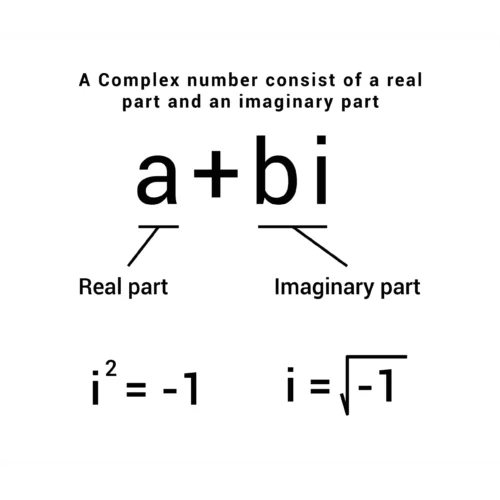Complex Number

Table of Contents
What is a Complex Number?
A complex number is a number that includes both a regular number (like 3 or -7) and a multiple of the square root of -1 (often denoted as “i”). For example, 5+2i is a complex number, where 5 is the real part and 2i is the imaginary part.
A complex number is a number that can be expressed in the form a+bi, where a \text{ and } b are real numbers, and i is the imaginary unit (i^2=\text{-}1). The real part is denoted by a, and the imaginary part is denoted by bi.
Complex Number Examples
3+4i, Here, 3 is the real part, and 4i is the imaginary part.
–2-7i, In this complex number, –2 is the real part, and –7i is the imaginary part.
5, Although 5 doesn’t have an explicit imaginary part, it can be written as 5+0i to fit the form of a complex number.
i, This is a pure imaginary number with a real part of 0 and an imaginary part of i.
–1, Similarly, –1 can be expressed as –1+0i, having a real part of –1 and an imaginary part of 0.
Related Links
Absolute Value
Conjugate Pair
Expression
Imaginary Unit